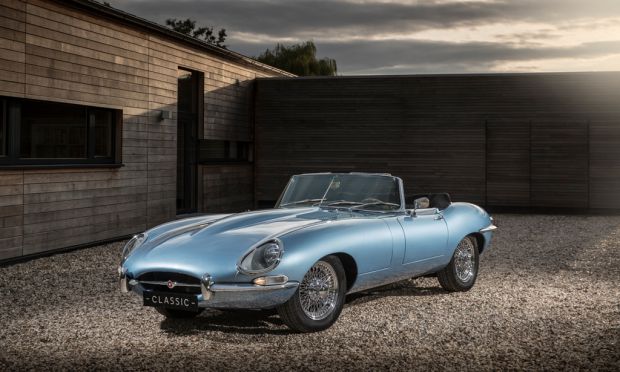Back

Jaguar has developed an electric E-Type!
7th September 2017
Jaguar Land Rover Classic is presenting an electric-powered Jaguar E-type at the Jaguar Land Rover Tech Fest, which opens to the public on 8 September in London. The car, known as E-type Zero, has been restored and converted at Jaguar Land Rover Classic Works in Coventry, not far from where the E-type was born.
The Jaguar E-type Zero not only drives and looks like an E-type, it also offers outstanding performance. It’s quicker than an original E-type: 0-100km/h (62mph) takes only 5.5sec, about one second quicker than a Series 1 E-type.
The E-type Zero vehicle, displayed at Tech Fest, is a restored Series 1.5 Roadster. It’s totally original in specification, apart from its 21st century state-of-the-art powertrain and modified instrumentation and facia – although these are also inspired by the original E-type. LED headlights are also used to achieve energy efficiency. Again, they adopt the styling theme of the original Series 1 E-type.
An electric powertrain developing 220kW has been specially designed for the E-type Zero. Its lithium-ion battery pack has the same dimensions, and similar weight, to the XK six-cylinder engine used in the original E-type. The experts responsible for developing the electric powertrain have ensured it will be placed in precisely the same location as the XK engine. The electric motor (and reduction gear) lies just behind the battery pack, in the same location as the E-type’s gearbox. A new propshaft sends power to a carry-over differential and final drive. Total weight is 46kg lower than the original E-type.
Using an electric powertrain with similar weight and dimensions to the outgoing petrol engine and transmission means the car’s structure, including suspension and brakes, has not changed, simplifying the conversion and homologation. It drives, handles, rides and brakes like an original E-type. Front-rear weight distribution is unchanged.
The E-type Zero has a ‘real world’ range of 270km (about 170 miles), helped by the low weight and good aerodynamics. It uses a 40kWh battery, which can be recharged from home overnight (typically in six to seven hours, depending on power source).
"We have integrated the new electric powertrain into the existing E-type structure, which means a conventional engine could be reinstalled at any point. We think this is essential as it ensures a period Jaguar remains authentic to its DNA." Tim Hanning, Director, Jaguar Land Rover Classics.
